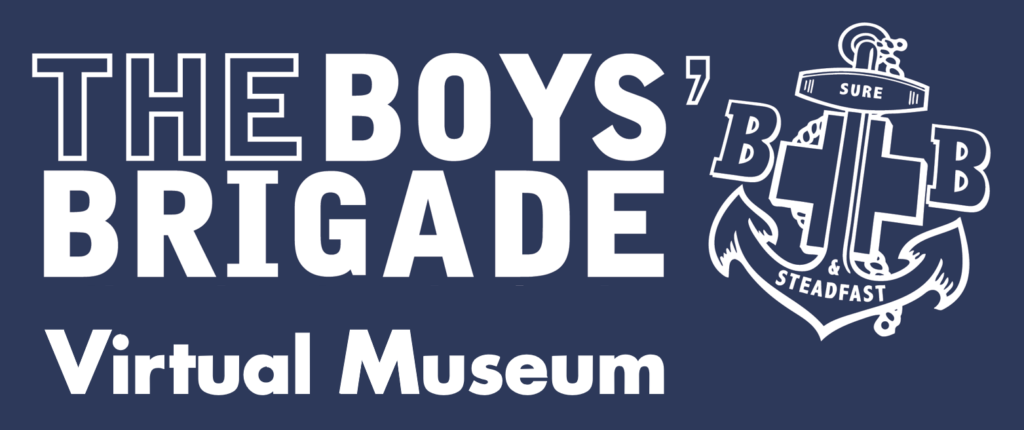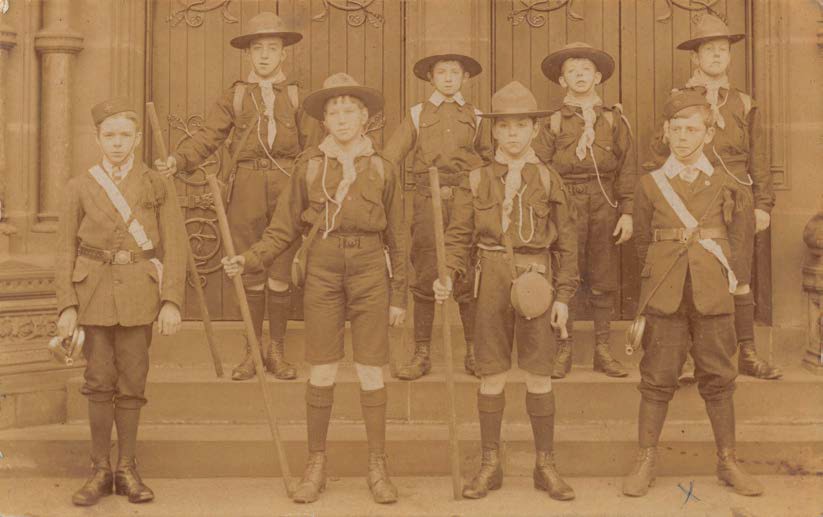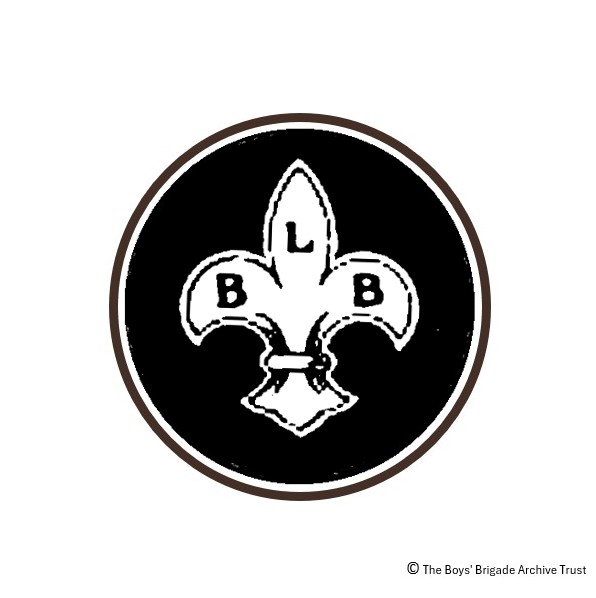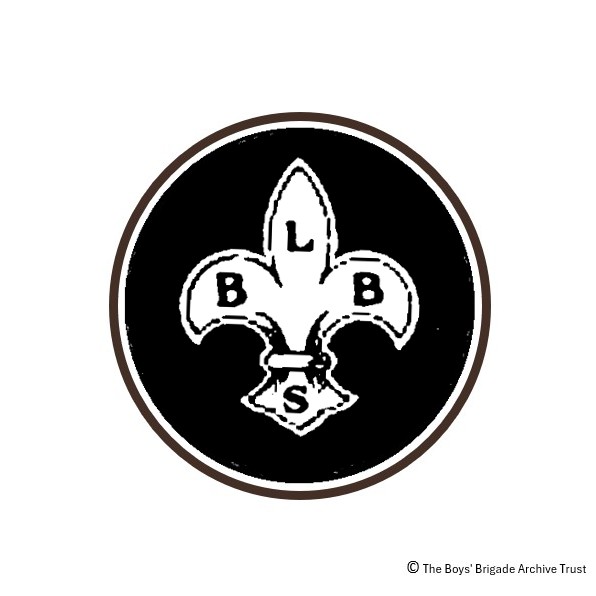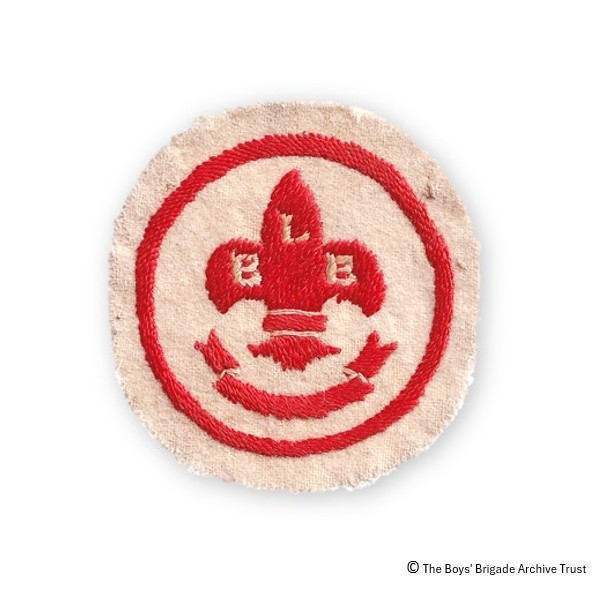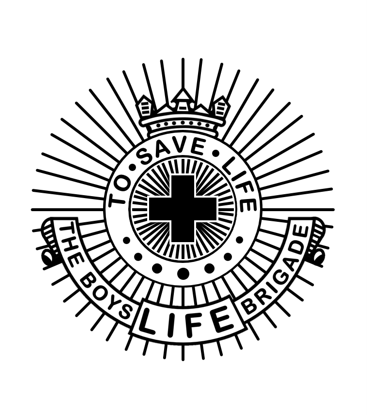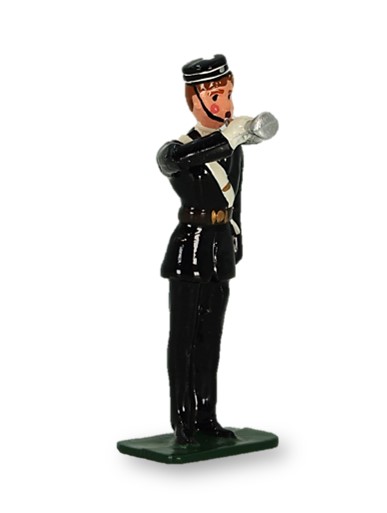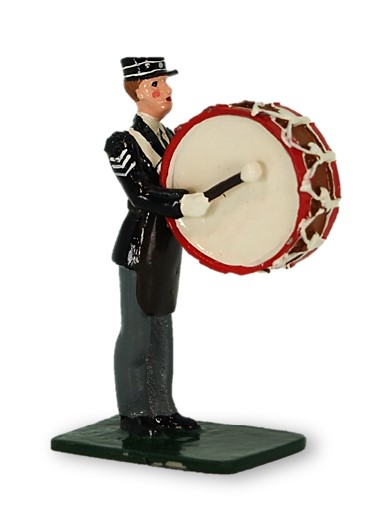Boys’ Life Brigade Scouts
Overview:
Upon his return from South African General Baden-Powell toured England promoting his ‘Scouting for Boys’. Boys’ Life Brigade Battalions and Companies were addressed by Baden-Powell on many occasions, and by 1909 scouting had been adopted as a BLB activity. Boys’ Life Brigade Scouts proficiency badges were authorised for wear with regular BLB uniform whilst on parade, and it seems a more traditional scouts attire may have been worn whilst on patrol. By the early 1920’s interest in scouting as an activity in the BLB was waning, and by the union with the Boys’ Brigade in October 1926, it was no longer an activity within the Boys’ Life Brigade.
The Story in more detail:
Inspecting the Derby Battalion of The Boys’ Life Brigade in 1908, General Baden-Powell addressed the parade, and a report of the address was published in the Life Brigade Chronicle: ‘It was a grand thing to see so many lads present, but he should like to see many more being trained in the same line, that of duty. When they were going through their exercises and drills, he urged them to keep that idea before them, that they were engaging in the training for the sake of the country, and not for amusement. Each boy should feel he was trying to make himself a better man, so that he would be strong and active as a man, do his work properly, and do his duty to his country.’ The General went on to say: ‘that his object as to the training of boys was not to start a separate organisation, because they had so many already for boys.’ He explained that he had been going around the country promoting a scheme, by which he wanted to get every young man to help in getting hold of all the boys and training them through the methods of scouting. General Baden-Powel was a frequent Inspecting Officer and speaker at Company, Battalion and District parades and displays around the country.
The interest in scouting was such that by the Brigade Council meeting in September of the same year, a resolution was passed: In view of the excellence of Lieut-General Baden-Powell’s Peace Scouting Scheme as a means of interesting and instilling character, manliness and good citizenship into boys, and of its adaptability to the BLB movement, it is desirable that it should be officially adopted as an optional part of the BLB programme, and the scouts’ badges and medals should be recognised as decorations to be worn with the Brigade uniform and should be obtained through our own Headquarters. The December edition of The Life Brigade Chronicle (below) carried the paper presented at the meeting, however as Baden-Powell’s own organisation started to grow exponentially, there was a lot of concern amongst the Officers of the BLB, and the Life Brigade Chronicles of 1909, contain many letters and articles regarding scouting in the BLB and the BP Peace Scouts. The Council had referred the matter back to the BLB Executive, who’s official stance on the mater was recorded in June 1909: Whilst unable to recognise officially Baden-Powell’s Scouting scheme, or to allow the uniform or decoration (other than the scouts badge) to be worn on parade, the Executive recommend Companies to adopt such parts of the scheme as may be found helpfult
Whilst there are a number of instances of separate BLB Scout troops being registered, it would appear that in general scouting was carried out as part of the regular BLB activities, with only a few individuals in a Company doing scouting. Brigade regulations required a BLB Scout Master be appointed in Companies engaging in scouting. There are very few records of these appointments in the Life Brigade Chronicles, possibly an indication of the lack of demand for scouting as an activity within the BLB. Post World War One, interest was starting to wain and even though Scouting proficiency badges were included in the publication ‘Stripes & Badges and How to Win them‘ published in 1919, this was mostly to cater for the remaining BLB Scouts. By the publication of ‘The Boys Handbook‘ in 1926 Scouting had disappeared from BLB activities.
